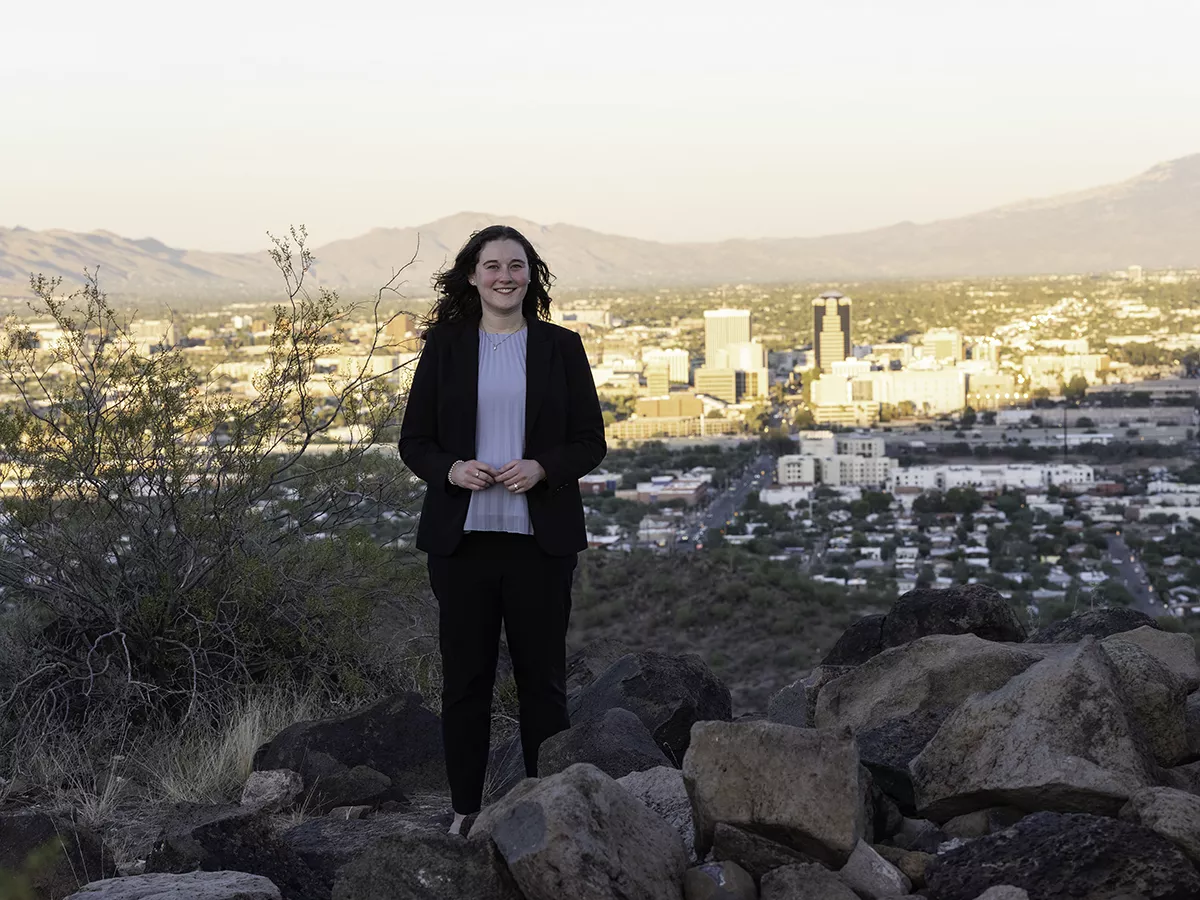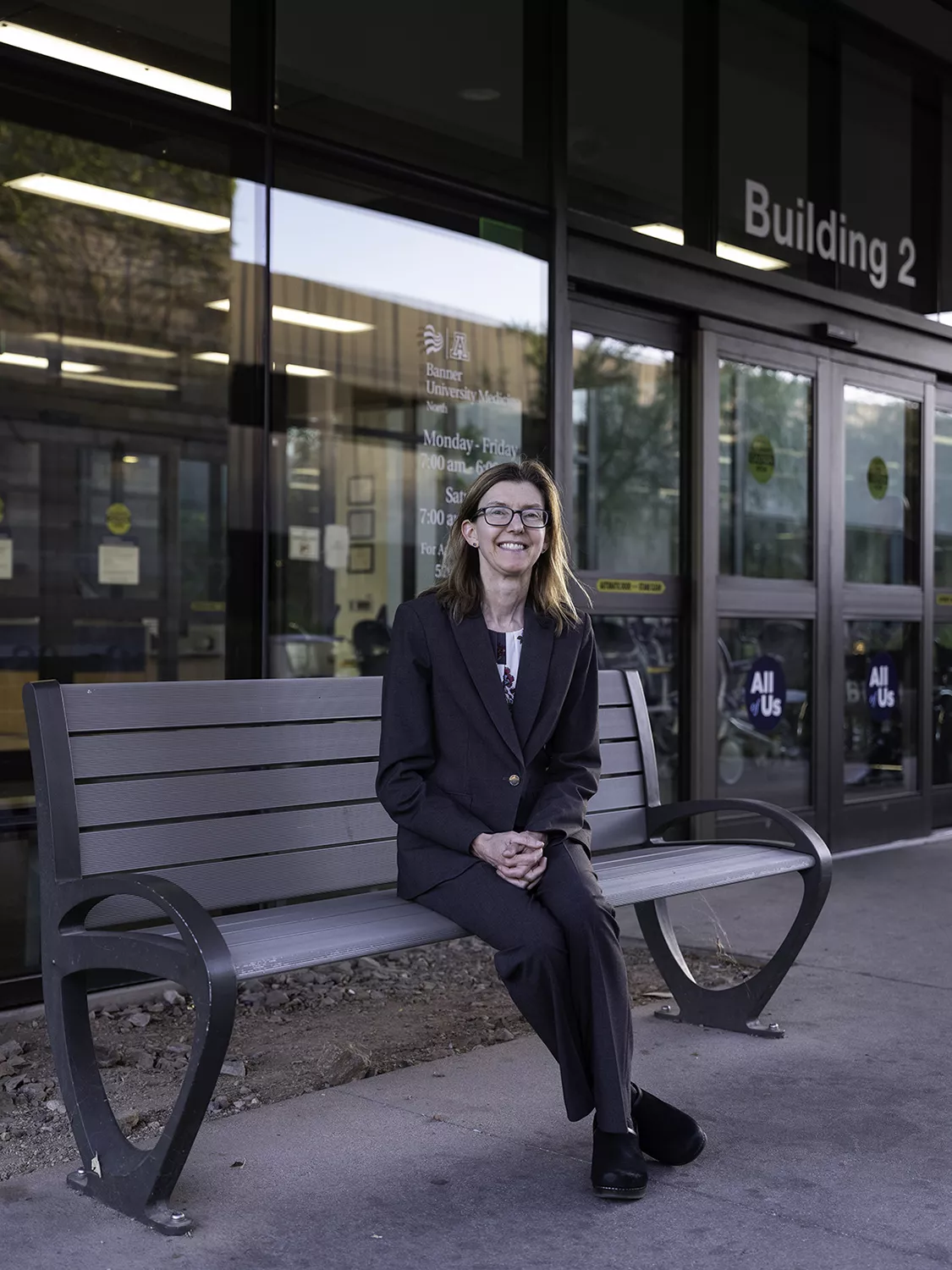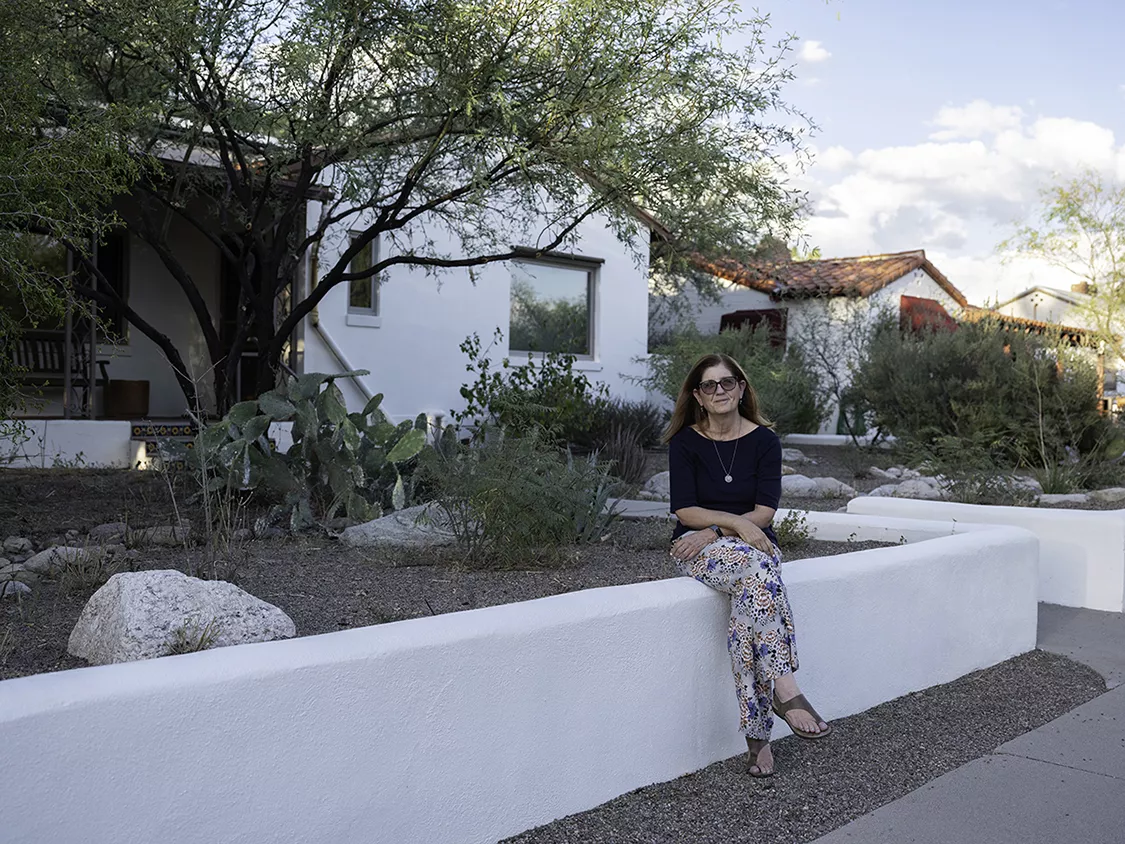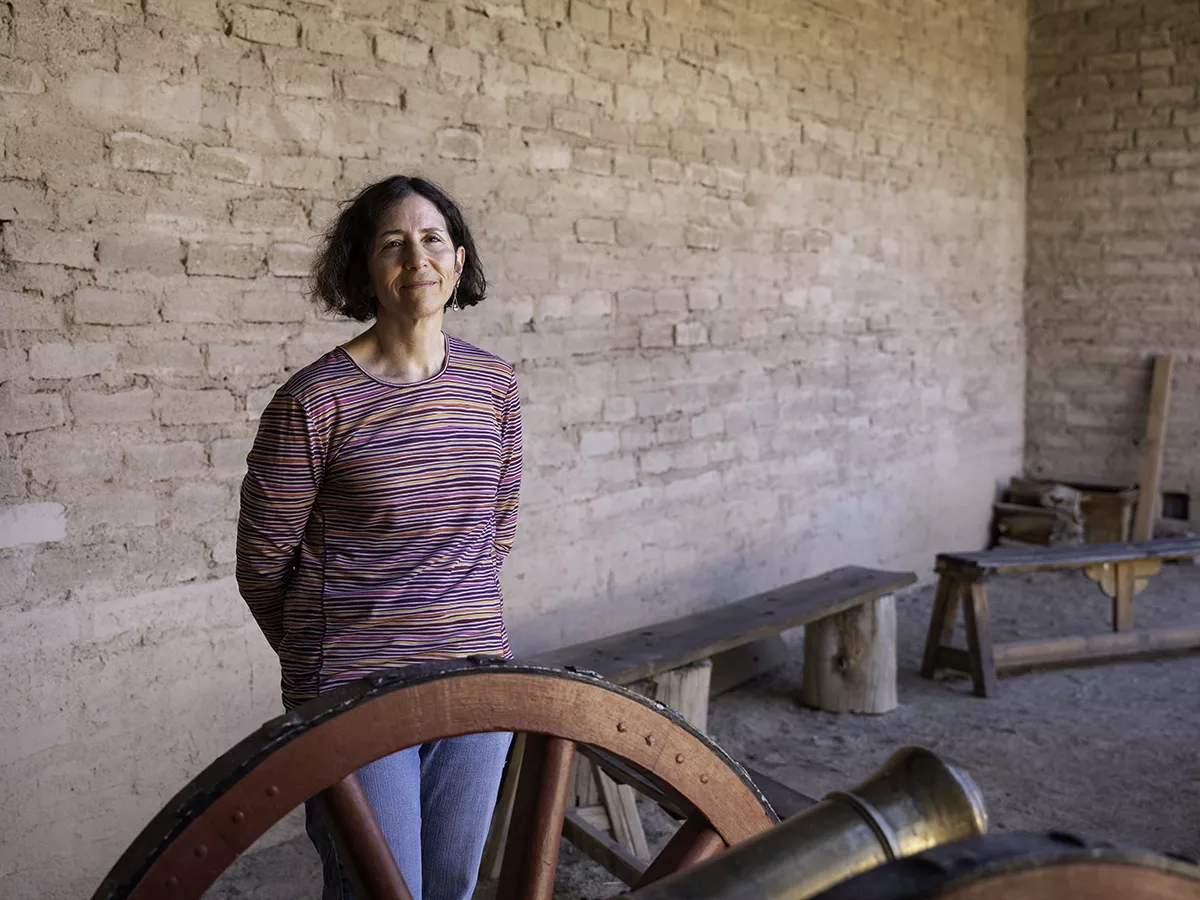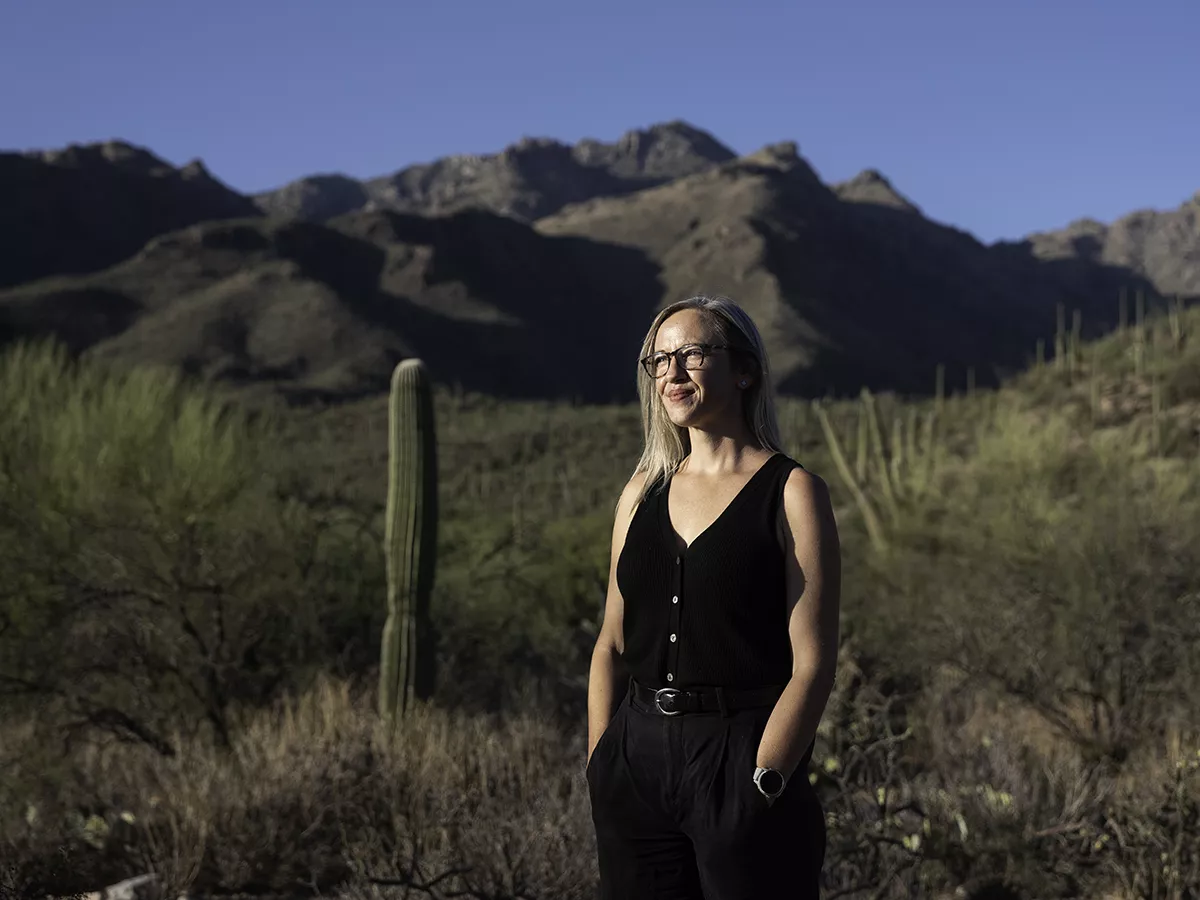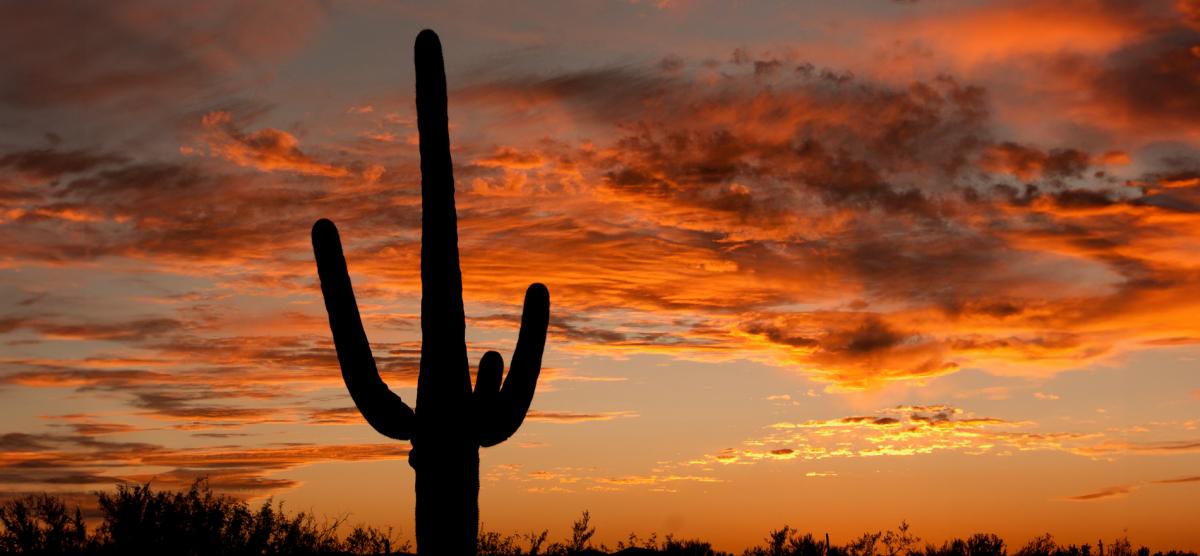
Mawrters in Tucson
A contingent of Bryn Mawr alumnae are making their mark on the Arizona city.
Located on a basin created by the Santa Cruz River in the Sonoran Desert, where towering saguaro cactuses grow and jaguars prowl, and surrounded by five mountain ranges, Tucson’s setting might be one of the most striking of U.S. cities. The Arizona city also has plenty of history, culture, and great food, as well as a diverse population: 42 percent of residents are Latino. Tucson has something else of note: a strong contingent of Bryn Mawr alumnae who have made the city their home.
“I love the Bryn Mawr community in Tucson,” says physician Holli Horak ’90. “We get together three or four times a year and just relax. It’s been an important part of my life here.”
Not surprisingly, these accomplished Mawrters are making their mark in their adopted hometown, roughly 2,300 miles from Bryn Mawr. These are a few of their stories.
Maura Dillon Hiser '14
Civil Rights Enforcer
Maura Dillon Hilser ’14 came to the field of law through an unexpected channel. A psychology major, she had worked in a Pittsburgh developmental psychology lab run by Jana Iverson ’91, then as a disability case manager for a nonprofit in Albuquerque. “I talked to people with disabilities and their families and saw how hard it is to get the services and accommodations they need. I started to see the law as a tool I could use to help people,” she says.
A 2017 move brought her to Tucson—where her husband had been reassigned with the U.S. Air Force— and to the University of Arizona James E. Rogers College of Law. “You hear about the stereotypical competitive law school, but it wasn’t like that,” she says. “I had some good relationships with professors, and the students were very collaborative. It was like Bryn Mawr.”
Hilser, whose first job out of law school was with the Arizona Center for Disability Law, is now an Arizona assistant attorney general in the Civil Rights Division, a dream job for her. She investigates complaints of discrimination and helps enforce the state’s civil rights laws. That can involve litigation, though more frequently issues are resolved through mediation or conciliation, which might mean mandating training or putting new policies and procedures in place. “What I love is being able to make changes in workplaces, in housing, in businesses,” she says, “to keep the discrimination from happening again.”
Hilser, who was raised in a small town near Poughkeepsie, N.Y., says she’s grown to love Tucson.
“There is something special about the desert and the mountains and getting outdoors, especially in winter when it’s not so hot. When it rains, there is this plant called creosote that releases this clean, earthy scent. I love that.”
Holli Horak '90
Neuromuscular Disease Expert
As a physician, Holli Horak often has to deliver life-altering diagnoses. Her patients live with illnesses such as muscular dystrophy, myasthenia gravis, and one she describes as “the most devastating”: ALS. “It’s so hard to tell patients that is what the diagnosis is,” says Horak. Yet sharing these life-changing moments with them is a deeply moving experience: “It’s a privilege to help them.”
Horak treats patients at Banner Health in Tucson, directs the neurophysiology fellowship at the University of Arizona College of Medicine, and educates students, residents, and fellows in neuromuscular disease management. In dealing with rare and often gradually debilitating diseases, Horak says, what’s most important is connecting with patients. “It begins with the first visit. I want them to feel that someone has listened to them and is going to help them. I let them know I am going to be there with them as we sort through this problem, that I’m going to help them understand what we can and can’t accomplish.”
Sometimes she can recommend medications to slow progression, but more often the focus is on “holistic care,” she says: providing supports that improve quality of life.
“Because it’s hard for our patients to travel, we have a multidisciplinary clinic where they find services all in one place, at one time. We have a speech therapist, a physical therapist, and an occupational therapist. If they need a wheelchair, we have a representative [from a supplier] who can prepare their chair. And we have volunteers from the ALS Association who offer support, advice, and resources.”
For Horak, who grew up in the Midwest, attended medical school in Ohio, and moved to Tucson in 2010, living in a city surrounded by a ruggedly beautiful desert landscape has been a revelation. “Everybody says, ‘You’ll learn to love the desert.’ And that’s true.
What I really appreciate is that people here respect the desert. They aren’t afraid of nature. They don’t want to tame it. They want to get out and enjoy it.”
Mary K. Gilliland '78
Higher Ed Champion
After finishing her Ph.D. in anthropology at UC San Diego, Mary K. Gilliland was a postdoctoral research associate at the University of Arizona when she heard that Pima Community College in Tucson needed someone to teach a second-year cultural anthropology class. Gilliland had taught at a community college in California and found that the teaching environment, with its small classes and diverse student body, “really spoke to my belief in the transformative power of education.”
That class at Pima led to a full-time faculty position, and, eventually, to her becoming chair of the Social Sciences Division, which included a robust anthropology department. She would spend 25 years at the college, her last eight as dean of the STEM Division (science, technology, engineering, and math).
One feature of community college education that Gilliland championed was building transfer partnerships with four-year colleges and universities. “They really provide opportunity,” and expanding educational opportunities is “something I never lost my passion for,” she says.
Today, Gilliland is vice president of Academic Affairs at Central Arizona College on its Coolidge campus. The college has four other campuses in mostly rural Pinal County, home to several Native American communities, and is designated as a Hispanic-Serving Institution (HSI) by the U.S. Department of Education, due to its 39% Hispanic enrollment.
The college has won numerous grants from the federal government, many designated for HSIs, and state funding has increased thanks to revenue from sales of legal recreational cannabis.
Those funds are fueling some new initiatives, including partnerships that provide paid internships in STEM fields and high-tech skilled trades. Gilliland and her colleagues are also working to establish a college-run childcare center on campus. “We have a hard time retaining some of our students who are economically challenged, and this could really help,” she says.
After more than three decades in Tucson, Gilliland says she appreciates the city’s just-right balance: “There’s a lot going on here, but there’s a bit of a slower pace.” She enjoys her garden full of native plants and serves on the board of Archaeology Southwest, a nonprofit that collaborates with Indigenous communities to protect heritage places.
“We also have a lot of Bryn Mawr alums in Tucson,” she says—including Tineke Van Zandt ’83, who took over Gilliland’s former job at Pima Community College, and artist and retired geologist Julia Graf ’67, a former neighbor. “Maybe part of what makes me so happy here is that connection to the mother ship.
Sarah Herr '91
Preserver of the Past
Tucson is a great place to be an archaeologist.
“Someone did a study maybe 15 years ago and found we had more archaeologists per capita than most other places in the U.S.,” says Sarah Herr, president of Desert Archaeology, Inc. The company’s 35-plus employees provide what are known as “cultural resources management” services to governments and businesses.
Just why Tucson is such an archaeology hotspot has to do with Arizona’s complex history, which includes thousands of years of continuous Native American life, the Spanish Colonial era that began in the 18th century, and the American period. “Communities here care about that,” says Herr, who earned a Ph.D. in anthropology from the University of Arizona. “There are layers of federal, state, and local laws protecting archaeological sites.”
The work done by Herr’s firm often happens in advance of development or infrastructure projects. (Her staff includes specialists in analyzing stone tools, ceramics, animal bones, and more, as well as an illustrator, a cartographer, and a paleoethnobotanist.) But it’s more than just digging for what can be documented, and then moving on.
“We engage with communities and help them build a love for the history of the region,” she says.
In some cases, sites uncovered by Desert Archaeology have sparked the creation of nonprofits to steward them as cultural heritage resources. One example is the Presidio San Agustín del Tucson Museum, a re-creation of a fort established by the Spanish Empire in 1775 that now offers programs for schoolchildren and special events. Another is Mission Garden, a living agricultural museum that illustrates 4,000 years of Tucson’s history and cultural diversity with heritage fruit trees, traditional local heirloom crops, and edible native plants. That arose from an excavation project at the former Spanish Colonial Mission, founded in 1771.
Herr’s most memorable project unfolded over nearly 20 years on ancestral Western Apache lands nearly 200 miles north of Tucson. “When I needed a crew, I hired people from a little town on the nearby reservation,” she recalls. “They were Apache, with a very intact language and culture, and as we worked we realized that they were finding their own history—before their people were moved to reservations. We could see how they used the landscape, how they related to the plant communities and the water sources.”
For Herr, Tucson has been a comfortable fit from the start, reminding her of her hometown of Santa Fe, New Mexico. “Santa Fe is a tri-cultural place,” she says. “It’s got a Native American, Spanish, and Anglo component to it. Tucson is the same, and that’s what I love about it.”
Robin Reineke '04
Forensic Anthropologist
When Robin Reineke moved to Tucson in 2006 for graduate work in anthropology at the University of Arizona, she had a specific aim: working with forensic anthropologist Bruce Anderson at the Pima County Office of the Medical Examiner. “He was trying to figure out how to do the right thing, given the dramatic increase in migrant deaths in the borderlands of southern Arizona,” says Reineke, who collaborated with Anderson to develop a volunteer program called the Missing Migrant Project.
Over the past two decades, the remains of more than 3,292 people have been found in the desert landscape of Arizona’s border with Mexico. And doing the right thing—the complex project of identifying the remains and giving some peace to the families of the dead—has relied on the field of forensic anthropology.
This subdiscipline of anthropology was at the heart of Reineke’s work with the Missing Migrant Project, where, in six years of volunteering, she became keenly aware of a cruel reality. “The families of missing migrants didn’t have any clear place to go,” she says. “They are turned away when they try to report their missing loved one to U.S. law enforcement. But when they are routed back to their own consulates, there are often jurisdictional issues.” So, in 2013, Reineke co-founded the Colibrí Center for Human Rights “to help bridge that gap and provide a safe and transparent system for those families.”
More than 4,000 people have been reported missing to the Colibrí Center, and more than 1,200 sets of remains recovered in the Arizona borderlands are still unidentified. (Reineke credits a fair share of the recovery work to citizen searchand-rescue groups, who walk for miles looking for migrants in distress and call the authorities when they find human remains.)
Bearing witness to so much death eventually wore on Reineke, who stepped down as director of the Colibrí Center in 2019. She’s now an assistant research social scientist at the University of Arizona’s Southwest Center and an assistant professor in the School of Anthropology. She’s at work on her first book, With the Dead, For the Living: Forensic Care in the U.S.-Mexico Borderlands.
That term forensic “care” is significant. Historically, forensics has related mostly to policing and crime solving, but forensic anthropology, Reineke observes, “is a very powerful project in the sense that it takes the science and technology of forensics—and, more specifically, DNA analysis— and operates on the belief that everyone should have access to that, regardless of their country of origin or legal status in the U.S.
“It’s about encountering the dead as vulnerable human beings and helping families—and seeing how forensic techniques can help make visible what’s happening on the border,” she adds.
Published on: 11/19/2023

